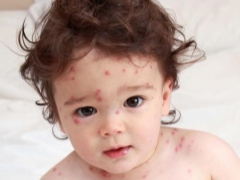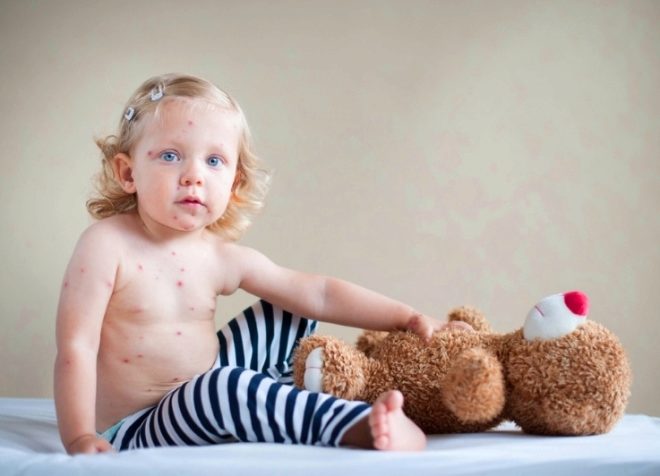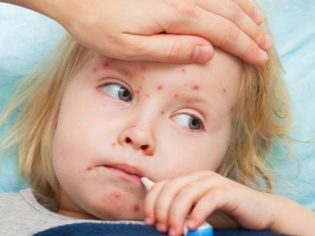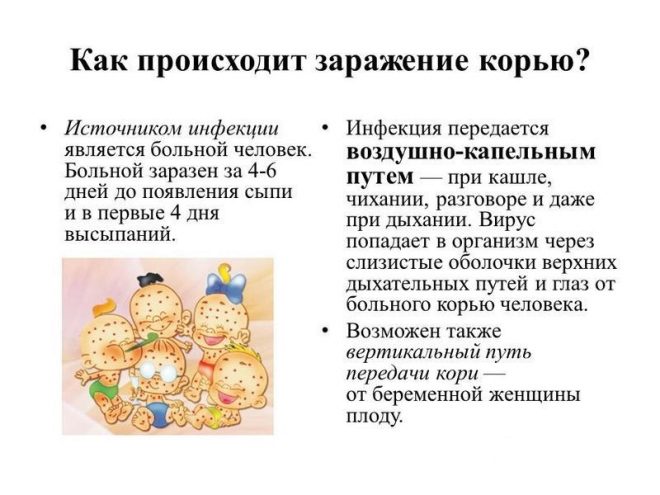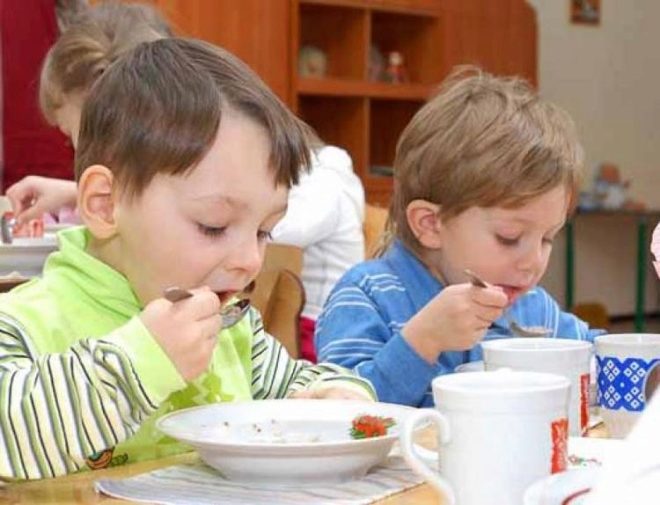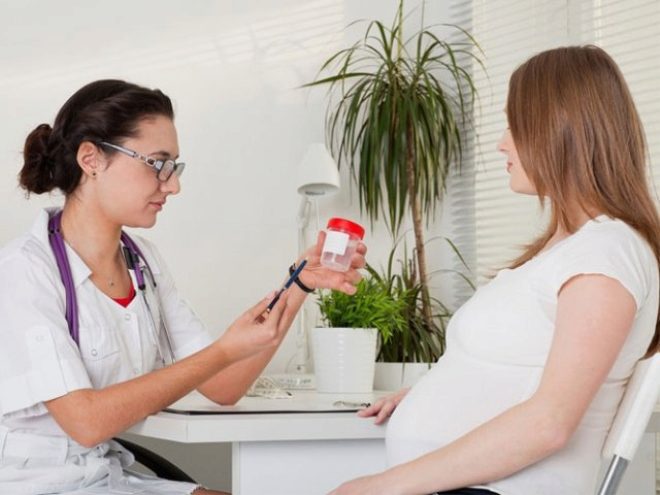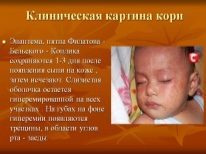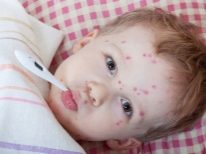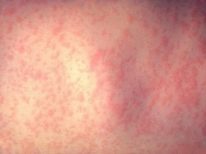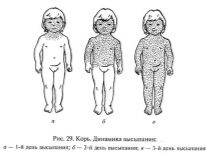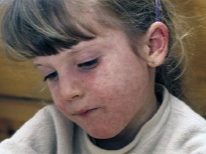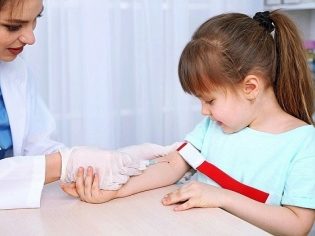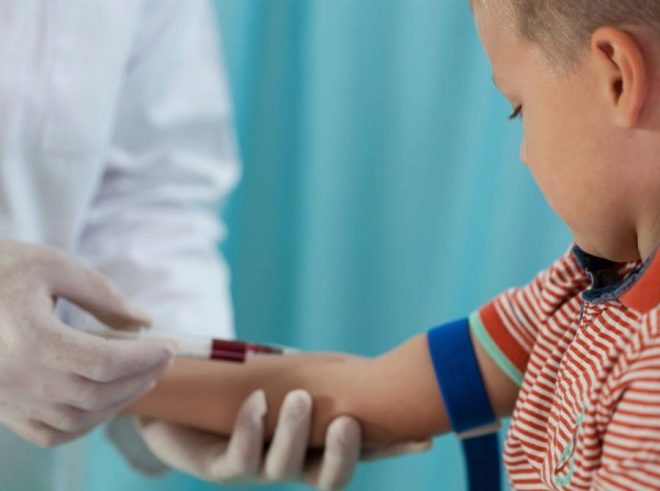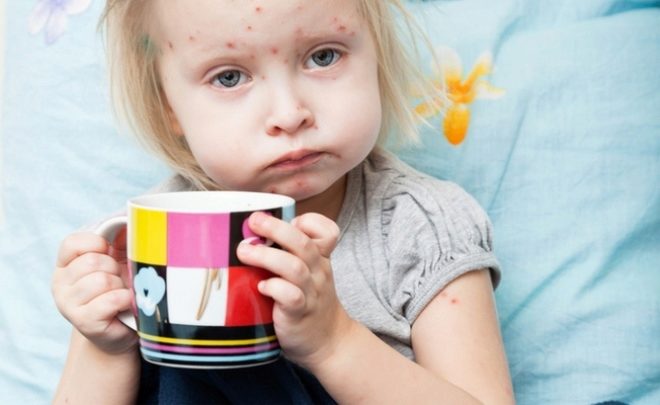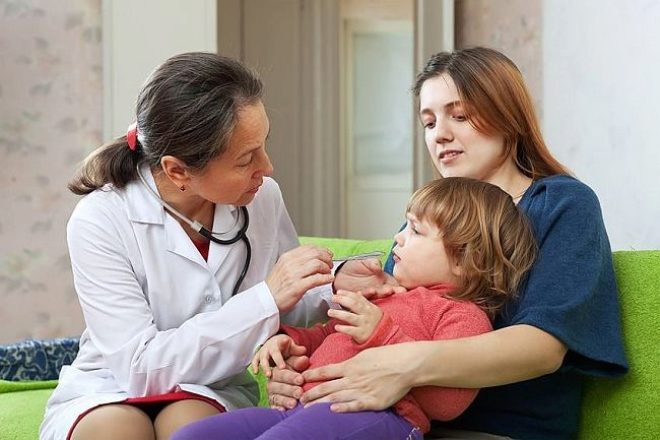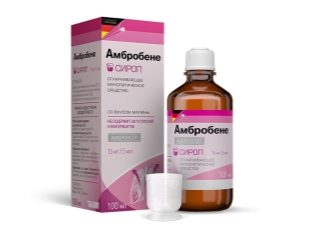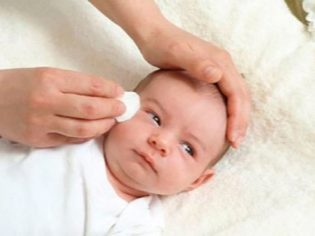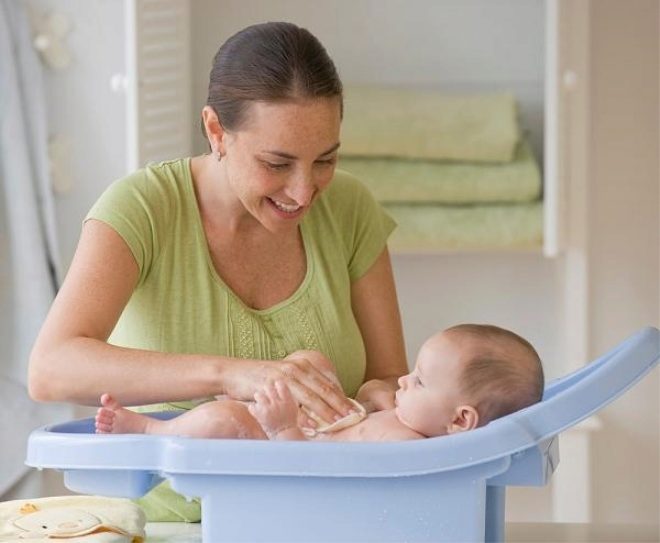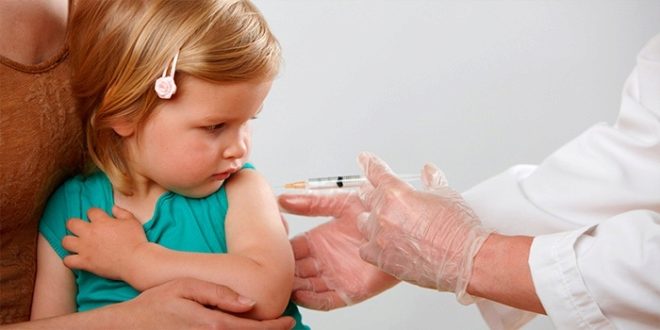Symptoms, treatment and prevention of measles in children
Measles infection - one of the most common diseases in children's practice. Children can get sick at any age. The disease is quite difficult and requires constant monitoring of the child's condition.
What causes measles?
This childhood disease is caused by a virus. He easily gets on the mucous membranes of a healthy baby from the patient. The virus is well preserved in the external environment, even in adverse conditions. When it enters the children's body, it multiplies quickly enough and spreads throughout the bloodstream.
Within a few days after the first contact with the pathogen, changes begin to occur in the body. The virus primarily affects the mucous membranes of the respiratory tract and oral cavity. Such a toxic effect on epithelial cells causes the development of adverse clinical symptoms later.
The peak incidence usually occurs at the age of 3-5 years.
The most severe disease can occur in newborns and infants. This is due to the peculiarity of the functioning and development of the immune system at this age. The immunity of the child is not yet able to actively cope with various infectious diseases. In such cases, treatment is usually required, and in severe cases of the disease, hospitalization is required.
How can you get infected?
Measles is transmitted most often by airborne droplets. The pathogen can persist for a long time in the body of a sick person. It is from it can be very easy to catch.
The volatility of measles is very high. It is rapidly spreading among kids. This explains the massive outbreaks of the disease in educational institutions.
It is important to note that the high contagiousness of the disease leads to the fact that even a vaccinated child can get sick. However, in most cases, the disease will be more mild and will not cause serious complications. For vaccinated children, compliance with all preventive measures is also a very important task. This will help prevent massive outbreaks of the disease.
You can also get measles by using someone else’s dishes or personal hygiene items. Toddlers often become infected in kindergarten. Usually during various games with toys. Often, children pull objects into their mouths to taste them. With the smallest particles of saliva, the virus gets on toys and can also be the cause of infection.
At home, children become infected if they use the dishes or cutlery of other family members who are sick. This often happens when improperly processing the mugs or plates during washing or insufficient drying. Use for wiping one kitchen towel is also not acceptable if there is a person who has measles in the house. Such textiles often become an excellent habitat for microorganisms and contribute to intra-family outbreaks of the disease.
One of the rarest transmission routes is the transplacental or intrauterine method. In this case, the baby can become infected from the mother, who becomes ill with measles during pregnancy.Often this occurs in unvaccinated women. Such an infection is very dangerous especially when infected in the early stages of pregnancy. A baby may develop malformations or pronounced defects in the structure of internal organs.
Incubation period
At the very beginning of the disease, it does not manifest itself. From the moment the virus first enters the child’s body until the first clinical manifestations occur, as a rule, 7-14 days pass. This time is called the incubation period.
During this period, the number of viral particles increases many times and spreads with the blood stream through the blood vessels to various organs. In contact with mucous membranes, the virus begins to exert its toxic effect. By the end of the first week, a cascade of inflammatory reactions leads to the appearance of the first specific symptoms specific to measles.
The main symptoms in children
After the end of the incubation period, babies begin to show the first signs of measles:
Severe intoxication. Often the disease begins with a rapid and intense increase in body temperature. It usually reaches 38-39 degrees. With more severe disease can rise above 39.5. Against the background of high temperature, general weakness increases. This symptom is especially unfavorable in babies under one year old.
Catarrhal symptoms. Since the virus primarily affects the mucous membranes of the respiratory tract, the first manifestations of the disease begin to occur there. Babies have a runny nose, and breathing becomes difficult. Nasal discharge is usually mucous and clear. Coughing may occur. Often he is a hacking or barker. With the usual course of the disease - cough dry. The appearance of sputum is characteristic only when joining complications. Most often it is a secondary bacterial infection.
The appearance of a rash. As a rule, it appears by the end of 3-4 days from the moment the first adverse symptoms of the disease appear. This symptom is most characteristic and specific for measles. Skin manifestations can persist on the skin for 4-5 days and gradually disappear.
The appearance of discomfort and pain in the abdomen. Not all babies. Most often this symptom appears in babies of infancy. Children refuse to feed, poorly applied to the breast. In children, the appetite is disturbed, they eat poorly.
Increased peripheral lymph nodes. The occipital and submandibular nodes are most often affected. When feeling can be somewhat aggravated soreness in this area. If the disease is severe, the enlarged lymph nodes can be seen even with the naked eye.
The appearance of specific spots Filatov-Belsky-Koplik. This symptom is associated with the toxic effect of the virus on the cells of the oral mucosa. These spots appear mainly on the palatal surfaces, as well as in the area of the cheeks. Usually they are white, about 2 mm in size. On the periphery of such specks - a red rim. This characteristic symptom appears before the development of measles rash and is an early harbinger of skin manifestations.
Violation of the general condition and well-being of the child. In the acute period of the disease, babies feel pronounced weakness. They have disturbed appetite and sleep. Kids are often naughty, do not play with toys. During high temperatures, intense thirst may occur. Children are naughty, they may even cry.
With a more severe course of the disease - the appearance of ecchymosis. As a rule, they occur on the legs. Ecchymosis looks like dark maroon bruises. They arise as a result of the action on the capillaries of the skin toxins that emit measles viruses in the course of their life. They pass on 7-10 day. Ecchymosis gradually change color from maroon to pink.
Usually these symptoms disappear after 5-6 days with a favorable course of the disease and no complications. If a secondary bacterial infection is involved, the inflammatory infectious process can be delayed for a much longer period. Infants in infants are often more protracted.
Characteristic measles rash
Skin manifestations in this infection are a key sign in the diagnosis of the disease.
Rash measles usually appears for 3-4 days of illness and has several characteristic signs:
The initial appearance of lesions on the neck, head and behind the ears. The elements then spread to the back, abdomen and limbs. Two days after the appearance of the first elements, the whole body becomes covered with red papules.
Wrong form. The papules for measles have an uneven contour. The photo shows the characteristic elements for measles infection. Usually they are round, arranged singly. In some cases, there are drainage areas. Usually papules do not rise above the level of the skin. When pressing on them, there is no marked pain. The affected skin is somewhat hyperemic and warmer to the touch.
When a rash appears, the child’s general condition either does not improve, or changes slightly for the better. For chickenpox, for example, a marked improvement in the baby’s well-being when a rash occurs is typical. For measles, however, there is no marked change in general condition. The baby also feels bad, drowsy, his appetite is reduced and sleep is disturbed.
The gradual disappearance of the sypnyh elements in 4-5 days. First go papules, located on the face and neck. Then the back, abdomen, arms and legs of the baby are cleaned.
The appearance of hyperpigmentation sites. In places of former sypnyh elements appear areas with more intense color. They can persist for a week after the last rashes disappear. Then they also gradually dissolve and disappear. In their place are usually formed areas with pronounced peeling. This symptom passes on its own and does not require treatment.
After the disappearance of the rash - improving well-being. As soon as the baby's skin is cleared, the child begins to feel much better. Appetite returns, sleep is restored. The baby becomes more mobile and active. Body temperature normalizes, and catarrhal symptoms disappear: runny nose and cough.
Diagnostics
Determining measles infection in the early stages or during the incubation period is a very difficult task. Sometimes even an experienced doctor without additional examination methods can not make an exact diagnosis during this period of the disease.
To recognize the disease will help not only the characteristic specific symptoms of the disease and the rash feature, but also auxiliary methods of examination. Usually, tests are required in complex diagnostic cases or in the presence of complications.
The simplest laboratory test to suspect the presence of a viral infection in the body is a complete blood count. Usually when measles increases the level of lymphocytes and accelerated ESR. In the leukocyte formula, a moderate increase in the number of leukocytes can be observed. These protective cells of the immune system are designed to fight any infectious diseases. The virus in the body leads to the appearance of moderate leukocytosis.
Also as a diagnostic test can be carried out immunoassay. The most common material for the study are nasal discharge, saliva, and venous blood. With this method you can already identify the causative agent of the measles virus. This study is quite specific and informative.
Rarely enough, doctors resort to performing serological tests. Such studies help detect specific antibodies.These protein molecules are formed in response to ingestion of any infectious diseases that are foreign to the body. An increase in the level of immunoglobulin type M to the measles virus indicates the presence of an acute infection in the body.
Such laboratory diagnostics is carried out in difficult diagnostic cases and allows you to accurately carry out a differential diagnosis. With the help of auxiliary tests it is possible to exclude a herpes infection, chickenpox, scarlet fever, as well as some other childhood diseases that occur with similar symptoms.
Complications and consequences
Measles can be very dangerous. If the course of the disease is severe, various complications may occur. They can be divided into several groups, depending on the reason that caused them:
Emerged directly due to infection. Often they are also called primary. They can manifest as viral pneumonia, bronchitis or pleurisy. They arise as a result of the spread of the virus through the bloodstream throughout the body and getting it into various internal organs. Most often such damage can occur in the bronchi and lungs. Treatment of such complications of measles is carried out, as a rule, in a polyclinic or even in a hospital.
Appeared as a result of the accession of a secondary bacterial infection or secondary. Most characteristic of babies with various types of immunodeficiencies. Bacterial abscesses may occur, various suppurations on the skin, in severe cases, meningitis and meningoencephalitis. Such complications in measles are quite rare, but require immediate hospitalization in an infectious hospital for more intensive treatment.
In order to prevent the development of complications and adverse outcome, the entire period of illness for the baby must be monitored by the attending physician. Only regular dynamic monitoring of the child’s condition will help to quickly identify the first negative symptoms of a worsening course of the disease.
Treatment
Clinical guidelines designed specifically for medical professionals in various medical disciplines describe how to treat babies with measles. Children, the course of the disease in which is mild and without complications, can be treated at home under the obligatory supervision of the attending physician.
Specific antiviral treatment for measles is not prescribed. Currently, drugs that would have a devastating effect on the virus itself, does not exist. The complex of therapeutic procedures includes the appointment of symptomatic agents. These drugs can eliminate all adverse symptoms that are most common during illness.
To eliminate cough used antitussive drugs. Such remedies will be more effective if sputum is not released during coughing. You can also use a variety of decoctions of medicinal plants that have antitussive and expectorant properties. For kids fit sage or chamomile. If the child’s cough has become wet and the sputum has started to flow away, then an appointment with expectorants will be needed. Amroxol and Ambrobene are most often used.
In order to normalize body temperature, various paracetamol-based drugs are used. Usually they are prescribed only on those days when it is raised to 38 degrees and above. Permanent reception of paracetamol is not required, since this tool has a sufficiently large number of different side effects and contraindications. Long-term administration can cause damage to the liver and kidneys.
If the baby has a runny nose, then vasoconstrictor nasal sprays and drops are used. To use such drugs should be strictly following the instructions. As a rule, most sprays can not be used in children under two years. For such babies are used vasoconstrictor drops. They are usually prescribed for 5-6 days, 1-2 drops in each nostril. Longer use of these funds is not recommended.
Infants who have a runny nose should always wash their nose and suck the contents with a pipette. This will help to significantly improve nasal breathing and quickly restore the sense of smell, which can be disturbed during illness. You can wash the spout with a solution of sea water or use special irrigators that wash the nasal passages well from the mucus and secretions that have accumulated there.
When the course of the disease is of moderate severity, pediatric doctors often prescribe additional drugs that have a stimulating effect on the immune system. These can be candles and local remedies in the form of nasal drops. They are usually prescribed for 5-7 days. Candles are written out rectally: one for the night. Used in babies from six months of age. Such tools are effective for children with low immunity.
Also, to improve the well-being of the baby, complex multivitamin preparations and supplements are prescribed. They help to enrich the diet of the child with all the necessary nutrients that are required during the fight against infection. Assign multivitamin complexes usually for a month. These funds help the body to quickly recover and fight disease.
In some cases, when a secondary bacterial infection joins, the baby may develop symptoms of conjunctivitis. Often they are tearing and severe redness of the eyes. To eliminate these symptoms, various antibacterial agents are used for the damaged conjunctiva. At home, you can also wipe and treat your eyes with decoctions of chamomile or calendula.
Also, when joining bacterial complications, doctors prescribe antibacterial drugs to the child.
Antibiotics are prescribed only by the attending physician strictly according to the indications. Such drugs are usually prescribed for 7-10 days with mandatory control tests.
In case of severe disease or accession of a secondary infection, hospitalization is often required. The kid is supervised around the clock by the medical staff, as well as an expanded complex of infusion therapy. All drugs in this case are administered through droppers and injections. Massive antibiotic therapy is prescribed. If the baby's consciousness is impaired, he is hospitalized in the intensive care unit or intensive care.
What to eat?
In the diet of the sick child must contain all the necessary nutrients. The need for these components increases significantly during any infection. For the active growth and development of cells of the immune system you need an adequate amount of high-grade protein, as well as useful vitamins and trace elements.
The diet of a child who has measles must include chicken, veal or fish dishes. You can cook vegetables or various cereals as a side dish. Try to choose the most gentle cooking methods. It is better to cook a baked patty than just boil a slice of beef. Injured mucosa in the mouth is easily vulnerable and can quickly be damaged.
Feed the child every 3-3.5 hours. Dairy products are perfect for afternoon tea or second dinner. The live lactobacilli and bifidobacteria contained in them will help restore immunity and improve intestinal function. All products should be as fresh as possible.
Meals should not be higher than 40-42 degrees. Too hot food can negatively affect the damaged mucous membrane in the mouth. Drinking cold drinks is also prohibited. All dishes should be at a comfortable temperature and do not contain hot spices.. Fried, smoked and pickled foods should also be excluded.
When making the menu during an illness, try to choose recipes with a thinner consistency. So, perfectly suited soups, very boiled porridge, as well as a variety of mashed potatoes. Fruits and vegetables in the acute period of the disease better pre-bake and wipe through a sieve. Crackers, cookies and crackers can damage the oral mucosa and even lead to additional trauma. It is better to exclude them.
To remove all the dangerous toxins that are formed as a result of the vital activity of viruses, it is necessary to give the child enough water. The quality of drinks may be weak tea, fruit and berry juice, as well as various fruit drinks and fruit drinks. Grudnichkov be sure to solder the usual warm boiled water.
Can I bathe the baby?
Hygiene procedures in the acute period of the disease and at high temperatures is not recommended. It is better to wait a few days until the baby stabilizes. 2-3 days after the normalization of the body temperature of the child can bathe. For this, it is better not to do long sit-down baths, but to resort to an ordinary soul.
You can use special shower gels. It is better to use neutral formulations without strong chemical aromatic additives.
Hard sponges or scourers are best not to use at this time. They can additionally injure the delicate skin of the child, on which there are numerous rashes.
After the shower, the baby should be wiped with a clean towel. It should be made of soft material and not injure the skin. After each procedure, be sure to wash the towels, and then iron on both sides with a hot iron. Exposure to very high temperatures has a detrimental effect on measles infection viruses. This measure will be an excellent prevention of domestic or contact method of infection for all family members.
How to organize a day regimen for a sick baby?
Not only the prescription of drug treatment plays a leading role in the treatment of the disease. Observing the daily regimen is also an important part of a successful and quick recovery. Since babies are being treated at home, this measure is a very effective element in the treatment of measles infection.
For a quick recovery, without the development of complications, you will need to comply with the following measures:
Enough sleep. At least 3-4 hours in the daytime, and at night - 9-10. Infants and newborns should sleep more. During sleep, under the influence of a number of hormones, the initial level of immunity is restored, and well-being improves.
Airing the room. To eliminate pathogenic viruses from the nursery, it must be aired. It is better to carry out this procedure when the baby is in the next room. For airing enough 10-15 minutes. It is better to do 3-4 such procedures throughout the day.
Limit active games. All mobile activities are better postponed until recovery and stabilization. Kids up to three years old for 3-4 days of illness require active games and are drawn to toys. With such physical activity is better not to hurry. In the acute period of the disease, the children's body spends a lot of energy to fight and infection, so active games can only significantly slow down the recovery process after an illness.
Disinfection room. For the treatment of the children's room during cleaning, you should use special disinfectants. They will help to destroy the pathogenic viruses that the sick child allocates in large numbers. Without such treatment, the number of microorganisms per day in a baby’s room can reach several million. It is better to carry out disinfecting cleaning daily.
Reduced insolation. If the baby has severe symptoms of conjunctivitis, then the room in which the child is located is better to curtain or darken.In children during this period, the symptom of light-disagreement can be strongly expressed. The bright rays of the sun increase pain. Dark blackout curtains perfectly help to cope with this adverse symptom of the disease and alleviate the condition of the baby.
Mouth treatment. Many babies may experience very dry lips during high temperatures. To eliminate this adverse symptom - be sure to wipe them with ordinary cotton pads or gauze cloths dipped in boiled water. If peeling or even cracking appears on the lips, then you can apply a baby cream or petroleum jelly on the damaged areas.
Compliance with quarantine. All toddlers with suspicion of measles must stay at home and must not attend kindergarten or school. Only early isolation of sick children will help prevent mass outbreaks of this dangerous disease. Quarantine must be up to three weeks. During this time, the child usually recovers and becomes not contagious.
Limit walks in the first days of illness. In the midst of measles, walking with a child on the street should not be. The baby is still too weak. Also, while on the street, a child can easily become cold or pick up another viral or bacterial infection. Walking with a child is possible after stabilization of well-being and improvement of his general condition.
Prevention
Compliance with preventive measures for measles infection is a very important factor in protecting babies from massive infections. This disease spreads very easily through the air. Any contact with a contagious child will lead to rapid infection of the healthy.
Scientists noted that the incidence of measles in crowded groups is 98-100%.
To date, all preventive measures can be divided into several categories:
Specific
May be carried out on an emergency and in a planned manner. Routine prevention is called vaccination. According to the National Calendar of Vaccinations of the Russian Federation, all babies at the age of 1 year, and then at 6 years old, vaccinations against measles are put. Such vaccination allows you to create a strong immunity in children for admission to kindergarten, and then to school.
Usually, before entering the children's educational institution all the babies have the appropriate vaccinations. However, children who come from other countries or have previously had medical withdrawals from vaccination do not receive the necessary vaccination against measles and other infections. They can be sources of infection for vaccinated babies. Most often this is exactly how mass measles outbreaks occur in educational institutions.
Emergency specific prevention is carried out in cases where there is a suspicion of contact with a measles child. So kiddies put gamma globulin. In its composition, it contains ready-made antibodies to the measles virus. Such a preparation is made, as a rule, by a biological and chemical method and can have quite a few contraindications and side effects. Appointed strictly by a doctor.
It is important to note that the production of immunoglobulin or the conduct of passive immunization will be effective only in the first days of the development of the disease. If a rash occurs at the height of the disease, this measure is not effective. The decision to conduct emergency specific immunization is decided by the attending physician after examining the child and assessing his general condition.
Nonspecific
Aimed at preventing massive outbreaks of the disease. All children with suspicion of measles and those who are already ill must be sent home for treatment. In educational institutions, quarantine is announced. It usually lasts 14-21 days. The exact terms of quarantine for measles are established by the regulatory authorities that carry out sanitary and hygienic supervision of educational institutions for children.
To prevent family infections, it is important to follow the rules of personal hygiene and the prevention of infectious diseases. A sick child must be isolated in a separate room. All household items, toys, dishes, linens and towels, it is important to regularly treat special disinfectant solutions.
Room cleaning is carried out strictly daily. Only detergents are used, which contain disinfecting or antibacterial active ingredients. For babies of infancy, be sure to sterilize the bottles and nipples. Toys that the baby can nibble or bite, also must be treated with disinfectants or washed in hot water.
Immunity
As a rule, a child who has had measles has a strong immunity, which lasts for the rest of his life. However, if the baby has acquired or congenital immunodeficiency or an inadequate level of functioning of the immune system, then he can also get sick again. It is worth noting that the course of the disease in this case, it will take place in a milder form and without the addition of complications.
Post-vaccination immunity also provides a fairly good protection of the body against measles infection. With the formulation of two vaccines, the probability of measles infection is reduced many times. In the process of immunization, specific antibodies are formed. They are able to recognize and cope with the measles virus even after many years.
Usually, all measles vaccinations are combined with rubella, as well as mumps. Such a comprehensive vaccination allows you to protect the children's body from the three most common infectious diseases that are very common in children's practice. Worldwide studies show that these vaccines combine well with varicella vaccination. In some European countries, four-part immunization is used: measles, rubella, parotitis and chicken pox.
The most vulnerable to measles infection are babies who do not have vaccinations, as well as pregnant women with low immunity due to pregnancy.
Measles is one of the most common childhood infections. With a favorable course of the disease proceeds fairly quickly and ends with recovery. In order for this to happen, it is necessary to suspect and diagnose measles in the very early stages of the disease. Such a timely diagnosis will ensure proper monitoring of the condition of the baby and ensure quick recovery.
For more information about the symptoms and treatment of measles, see Dr. Komarovsky’s program.
